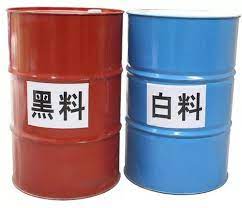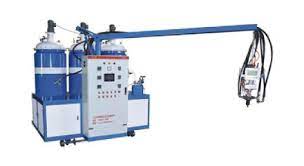Polyurethane foam stress balls are popular because they help people relieve stress and can be used as promotional items. However, one of the problems with these stress balls is that you can’t recycle them.
Polyurethane foam stress balls can’t be recycled because the chemical process that makes the foam makes it impossible to turn the material back into what it was before. Specifically, the foam is made by reacting diisocyanates (like toluene diisocyanate or methylene diphenyl diisocyanate) with polyols to form a cross-linked polymer network. This reaction turns the liquid chemicals into a solid, flexible foam that you can’t break down and turn back into a liquid. This is a big problem because it’s bad for the environment.
In this article, I will talk about what these stress balls are made of, why you can’t recycle them, whether they’re safe to use, and what the future holds for stress balls.
If you want to make good decisions, you need to understand what polyurethane foam is, how it affects recycling and your health, and what’s happening with it.

Basic Information about Polyurethane Stress Balls
Materials and Manufacturing Process
Polyurethane stress balls are made by taking liquid chemicals, primarily diisocyanates (like toluene diisocyanate or methylene diphenyl diisocyanate) and polyols, and reacting them together to make a solid foam that’s full of bubbles. This reaction is a one-way street. You can’t take the foam and turn it back into the liquid chemicals you started with, so you can’t recycle it.
Polyurethane is a polymer made up of organic units joined together by urethane links. It’s created by reacting a diisocyanate with a polyol. The resulting foam is lightweight, durable, and flexible, which is why it’s great for stress balls. To make the foam, you pour the liquid mixture into a mold, and it expands and solidifies into the shape you want. The chemical bonds that form during this reaction are so strong that you can’t break them apart to recycle the material.
Usage
Polyurethane stress balls are soft and squishy, which makes them great for relieving stress at home or work. They’re also cheap and easy to customize, which is why you see them at trade shows and corporate events. You can make them in any shape or size you want and put your logo or message on them. Even though they’re great for all these things, you can’t recycle them, which is bad for the environment.
Lifespan and Maintenance
Polyurethane stress balls aren’t something you use once and throw away. If you take care of them, they can last for years. To take care of your stress balls, you need to clean them and not beat the crap out of them. If you tell people to take care of their stress balls, they won’t throw them away as often, which is good for the environment. You can clean your stress balls by wiping them off with a damp cloth. You should also store them out of direct sunlight.
Recyclability Analysis
Challenges
The reason you can’t recycle polyurethane foam is because of its chemical structure. The cross-linked polymer chains that make it strong and stretchy also make it so you can’t break it down. When you recycle something, you melt it and reform it into something else. You can’t do that with polyurethane foam. This is a big problem because people throw away a lot of stress balls, which end up in landfills.
Advancements in Recycling Technologies
There has been some research into recycling polyurethane foam, but it’s not very far along. One way to recycle polyurethane foam is to use chemicals to break it down into the chemicals you started with. This is called hemolysis. There are a few different ways to do this, including glycolysis, hydrolysis, and aminolysis. Glycolysis breaks down the foam using glycols at high temperatures, which gives you polyol that you can use to make new polyurethane products. Hydrolysis uses water to break down the polymers, and aminolysis uses amines to do the same thing. These methods are still in the experimental phase and aren’t being used on a large scale.
Detailed Chemical Recycling Discussion
- Glycolysis: You heat the polyurethane foam with glycols. This breaks the polymer chains and gives you polyols you can use to make new polyurethane products. This is good because you might be able to stick it in your existing process.
- Hydrolysis: You use water to break down the polyurethane foam. You usually have to do this at high temperatures and pressures to get it to work. You end up with a mix of polyols and other stuff you might be able to use again or do something else with.
- Aminolysis: You use amines to break down the polyurethane foam into useful chemicals. This is still being researched, but it looks good because you can make high-quality polyols.
Despite the potential of these methods, they are not yet commercially viable due to high costs and technological challenges.
Global Recycling Efforts
In some places, they burn polyurethane stress balls to make energy. This is better than throwing them in the landfill, but it’s not great because you lose material and you might have emissions. When you burn stuff, you can get pollution like CO2 and other greenhouse gases that contribute to climate change. Some fancy places have waste-to-energy facilities that help with this, but it’s still something to think about.
Potential Solutions
To help with this, you can make stress balls out of biodegradable materials or make the polyurethane foam easier to recycle. You need researchers and people who know what they’re doing to work together and come up with ways to recycle this stuff that works in the real world.
Health Impacts on Consumers
Potential Health Risks
While polyurethane stress balls are generally safe, there are potential health concerns for people who use them, especially if they have allergies or sensitivities to certain chemicals. If you’re around the chemicals used to make polyurethane, like isocyanates, for a long time, you might get a rash or have an allergic reaction. If the stress ball breaks, it might release little pieces or gases that could be bad if you breathe them in or eat them.
Preventive Measures
You can help protect yourself by checking your stress balls for damage regularly. If you see any damage, throw it away right. You don’t want to be exposed to anything bad. You should also wash your hands after you’ve been playing with your stress ball. Don’t squeeze it so hard that it breaks.
Case Studies
A study by the Consumer Product Safety Commission (CPSC) found that kids who played with broken polyurethane toys, including stress balls, had a little bit of a cough. This is another reason to throw away your stress ball if it’s damaged. Manufacturers can help by making sure they follow the rules and test their products to make sure they’re safe.
Future Trends and Recommendations
Innovations and Alternatives
The industry is looking at other materials and better ways to recycle stress balls. One idea is to make stress balls that will break down naturally. This would make people happy and help the environment. People are studying natural rubber and plant-based materials as possible replacements for polyurethane. These materials break down more easily, so they’re better for the environment.
Advancements in Chemical Recycling
People are working on ways to break down the polyurethane foam into the chemicals you started with so you can use them again. This is called depolymerization. You break the polymer chains back into the little pieces you started with using chemicals. This is still being researched, but if they figure it out, it could change everything.
Industry Responsibility
As a leading supplier of custom stress balls, we follow the rules to make sure our products are safe. We also care about the environment. We get our materials from people who follow the rules, and we try not to make too much garbage when we produce our stress balls. We’re always looking for new ways to make our products easier to recycle and to do better for the environment.
At the same time, we’re working with our upstream suppliers to develop biodegradable stress balls. This is a challenge because when you go through the chemical changes to make something biodegradable, you create a lot of chemical bonds. It’s not easy. It’s not something you can just do. It’s not something you can just snap your fingers and make happen. It’s a long-term commitment.

Recommendations for Consumers
You can help by buying stuff made from good materials and giving your money to companies that care about the environment. If you buy stress balls made from stuff that breaks down or can be recycled, you help cut down on garbage. You should also throw away your stress ball the right way when you’re done with it.
Conclusion
The fact that recycling stress balls is hard shows we need to come up with new ideas. It’s important to give your money to people who are trying to do the right thing for the environment and the people who will come after us. You should purchase your stress balls from people who care about the environment and do the right thing.
The environmental impact of polyurethane stress balls is another reason we need to find a better alternative. We all need to do our part to take care of the planet. One way we can do that is by buying products that are better for the environment. Another way is by pushing for better recycling technology.
If you’d like to learn more about our sustainable solutions, please reach out to us.

